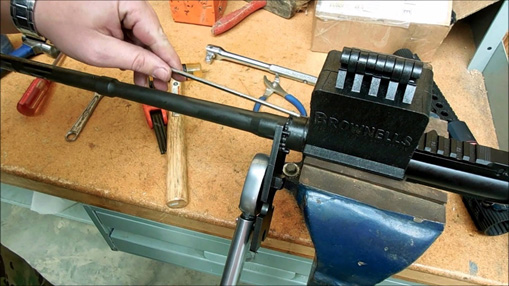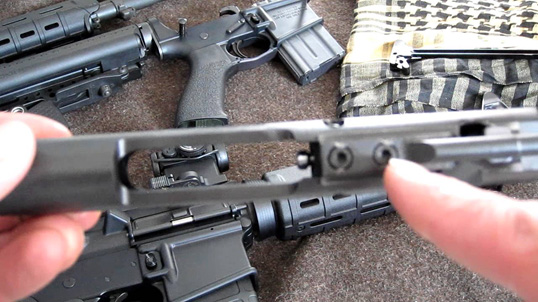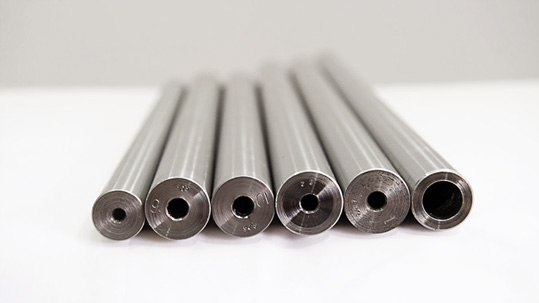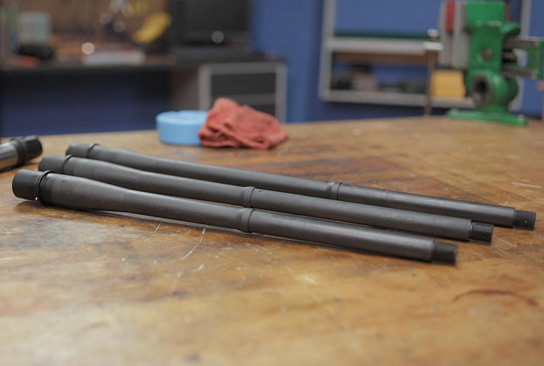The Basics: A Beginner's Guide to Building an AR-15
Sam Bocetta

Building your own AR-15 is an incredibly fun and rewarding endeavor. Instead of ordering a stock model from a factory through a gun shop, firearms enthusiasts might enjoy making their own, personalized, model instead.
There are some basic rules when it comes to creating your own AR-15 from scratch. Such rules need to be followed closely.
At the same time, you will need your own space to work in – one that is distraction free.
The most important thing to consider here, though, are the barrels to which you have access. Criterion Barrels are the best option, as you will see below.
Some Basic Rules

There are a few rules when it comes to making your model - most of them are common sense.
For example, you must follow the same state regulations as if you purchased the complete firearm from the factory. If certain things from the factory are not be permitted, then they are certainly not allowed on a home-made or modified version, either.
While a federal firearms registry does not exist, you still need to see what your state requires in terms of registration. Some states require all ‘assault rifles’ to be registered - such as New York.
Some people wonder if they must be a licensed gunsmith to build their AR-15. So long as you do not plan on building the lower receiver on your own, you can build the rest of the gun without a gunsmith license.
However, there’s no harm in asking a licensed gunsmith for help or ideas. That said, if you are not a licensed gunsmith you can purchase a lower receiver without any modifications from a dealer.
Some states allow you to sell an AR-15 you have built in your home or workshop. To be on the safe side, you should look at state laws regarding private sales first.
Learning the Lingo

Before you dive headlong into building a rifle on your own, it would help if you become familiar with some of the language involved.
Should you already possess this knowledge, then you are off to a great start. If not, you need to take the time to learn the difference between some of the parts.
Certain AR-15 models can include upwards of 100 or more components, which means you need to understand what they are and what they do. This task might take some time.
However, it will make discussing what you want out of the rifle easier, especially when it comes to ordering parts. Therefore, you might want to perform some research about this rifle, all the parts, what they are, and how they work together before building one on your own.
When in doubt, spend some time with your local licensed gunsmith and ask him or her some questions. Usually, they do not mind these conversations, since helping you make informed decisions is a large part of their job description.
Why You Want to Build an AR-15

Some people might just want to build an AR-15 for fun, as part of a hobby. Maybe you are one of these people, so you end up building these firearms for someone else.
Before you do so, though, make sure you know the laws about performing this task in your state, as mentioned earlier. However, there are other reasons behind why you might want to build your AR-15.
First and foremost, deciding to take this task on means your rifle can be built to your specifications. It does not come with any additional parts or finishes that you might not want.
You can add any items you wish, so long as they work in a kosher manner with one another. However, there is a process of deciding what you need to include with these items.
Therefore, you need to look at the purpose of the rifle. Start off by asking yourself how the rifle will be used on a routine basis.
If you plan on using the rifle for defense in close quarters, then you want it to be more compact. This size might rule out some larger components, like longer barrels.
On the other hand, you might want to use this firearm for competition purposes. Should this be the case, then you need to look at the competition guidelines for using the rifle.
Sometimes, competitions have limitations on what you can and cannot use with your AR-15. Hence, using these guidelines when building the firearm avoids the chance of your being disqualified for not having the right components.
Some other considerations are at play with the types of barrels you will want to use. While barrels will be looked at in more detail in a moment, you need to start off with making some decisions.
First, you want to look at how far you plan on being away from your target. Then, you need to look at the type of power you want behind your shot.
Finally, you need to decide what type of accuracy you need to gain from the rifle. If accuracy matters the most, then you need to be careful about the type of barrel you pick.
Looking More Closely at Barrel Options

When it comes to finding the right barrel for your AR-15, there are a few items that you need to consider.
First and foremost, you need to look at the difference between 5.56 chambered and .223 chambered. A 5.56 chamber can shoot both 5.56 and .223 ammunition, but .223 chambers can only fit .223 ammunition.
The difference focuses on the size of ammunition you want to use. There are two types of barrel twists as well.
The first type worth considering is a 1:7 ratio, which means that the ammunition will spin one time for every seven inches it travels. This ratio allows you the chance to use heavier rounds in the barrel because it provides more power and thrust behind the shot.
A 1:9 ratio twist means the ammunition will spin once for every nine inches it travels. This ratio works great for lighter rounds because they do not need as much power.
There are also a few, different lengths to pick from when ordering a barrel. Such options include carbine, mid-length, and rifle length.
Carbine and mid-length systems have the gas location on the barrels themselves, and they tend to only be 16 to 18 inches in length. Rifle length options are longer at 20 inches or more, and the gas system has a different location. If you’re planning on getting AR-15 furniture you’ll need to carefully consider if your upgrades will fit the furniture.
Knowing which gas system and barrel to go with plays a key role in understanding the fit of the gas tube you plan on using. In other words, a carbine barrel will not fit with a rifle length gas tube.
The Best Barrels

Some brands of barrels are better than others, for certain. However, one brand worth considering is Criterion Barrels.
This company offers nine different barrels online for AR-15s, and they all serve different purposes. Here are a few examples from their stock to consider.
First of all, you have the AR-15 lightweight contour barrel, also called a pencil. This barrel focuses on saving weight, which makes it great for taking out into the wilderness or on long travels.
Criterion Barrel’s AR-15 high power contour barrel focuses on competition-grade power. This heavy service rifle provides accuracy unlike any other barrel available through the company. Barrels are just one of the many ways to upgrade your rifle.
Your Building Space

Once you decided on specific parts and had them all at the ready for building the AR-15, you can start considering the building process. Before going too deeply into that step, though, first, you should take a closer look at the area where you will build the rifle especially if you’re adding a reloading press.
To begin with, you need a quiet place without any distractions. Building one of these firearms takes a lot of concentration because working with the parts can be rather tedious.
Therefore, you need to make certain children and animals are nowhere near by to interrupt you. Having little hands and little – or big – paws in the way can make for a messy situation.
At the same time, you will need a lot of room to work. Spreading out the parts in a dining room or kitchen table and then having to put them away a few hours later can become tiresome and bothersome.
In the end, what matters more than anything when it comes to assembling your rifle in one place is how organized you can remain. Being able to reach for items with ease and always knowing where they will make certain your build goes a lot more smoothly.
Your build space will require a few things anyway.
For one, you need plenty of light. After all, you will be working with small parts, so you need to be able to see them clearly without straining your eyes.
Furthermore, you might also need a vice to hold some parts in place while building on them. Setting up a vice in the dining room or kitchen is not ideal, so having a room or workshop to spend time in regularly is a great idea for people who build rifles routinely.
Conclusion
Even though the AR-15 may be a more complicated firearm to put together than say an air rifle, it’s still something that you can do on your own without the aid of a gunsmith or a professional.
When it comes to building your first AR-15, you need to make some weighty decisions. Once you conclude some items on this list, then you can settle into making your first rifle.
Be prepared to invest a lot of time, though, especially as you might experience minor setbacks along the way. You will learn from these mistakes, though.
So, enjoy the process as much as you can while the fun lasts. After all, this experience is supposed to be just that: fun and fulfilling.

